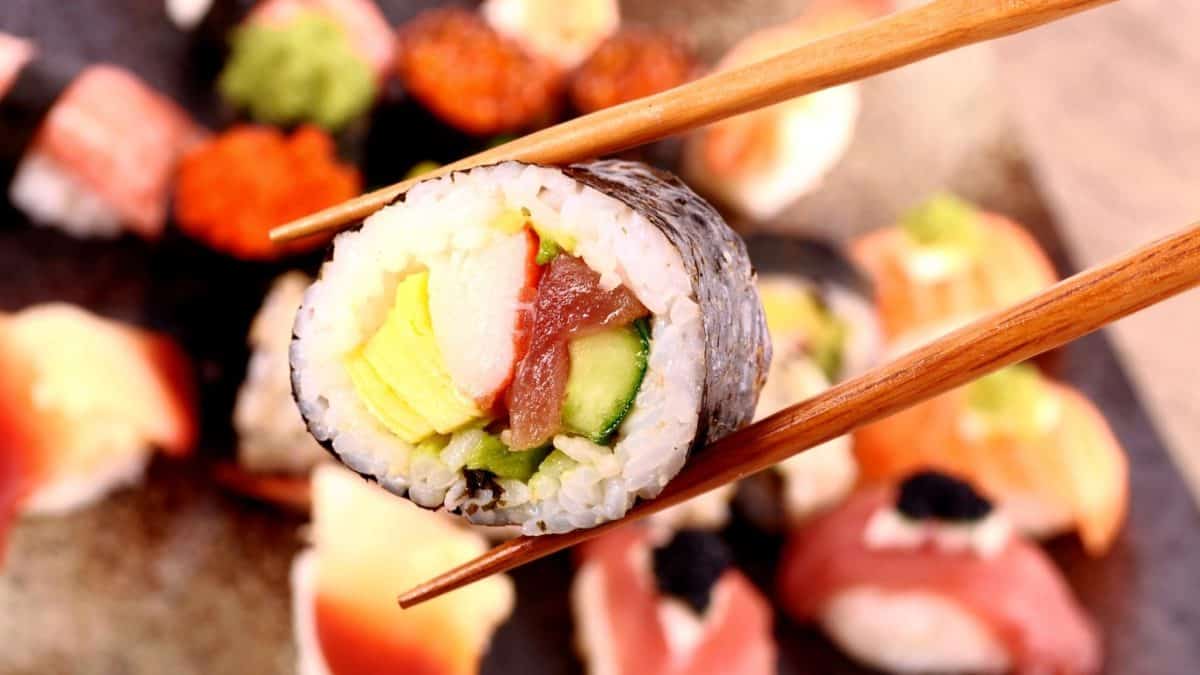Futomaki: The Large Sushi Rolls That Took The World By Storm
Futomaki is a type of sushi roll that is typically made with nori (seaweed) on the outside and filled with a variety of ingredients, including rice, vegetables, and fish. Futomaki can be enjoyed as an appetizer or main course, and is often served with soy sauce and pickled ginger.


Check out our new cookbook
Bitemybun's family recipes with complete meal planner and recipe guide.
Try it out for free with Kindle Unlimited:
Read for freeIn this post we'll cover:
What does “futomaki” mean?
The word “futomaki” comes from the Japanese words “futo” (fat) and “maki” (roll). Futomaki is therefore known as the fat rolled sushi, the large roll that contains multiple ingredients in one roll.
It is much larger (2 to 3 inches) than a regular maki roll because it uses multiple ingredients in one roll whereas maki uses only one ingredient at a time, like tuna or cucumber.
What’s the origin of futomaki?
Futomaki originated from the celebratory Osakan ehomaki, where a thick sushi roll filled with several ingredients is eaten whole in the Setsubun end-of-winter festival and is a relatively new form of makizushi.
In the 1960s the celebrations were covered nationwide and a convenience store saw the opportunity to start selling the rolls in the rest of Japan. By the end of 1990, it was popular throughout Japan.
The celebratory nature of the ehomaki was lost and the rest of the country cut the futomaki up into slices, just like with regular maki.
What’s the difference between futomaki and maki?
This is kind of a trick question, because hosomaki is the type of maki people usually mean when talking about maki, but all of the rolled sushi is called maki, including futomaki. So Futomaki is the thick rolled sushi and maki encompasses all maki.
What’s the difference between futomaki and hosomaki?
The main difference between futomaki and hosomaki is the size and the number of ingredients. Futomaki is a thick roll that can be 2 to 3 inches in diameter and contains multiple ingredients, while hosomaki is a thinner roll that is usually only 1 inch in diameter and contains only one ingredient.
What are some common ingredients in futomaki?
Some common ingredients in futomaki include nori (seaweed), rice, vegetables, fish, and pickled ginger, and my favorite is daikon radish.
Also read: what are the fish eggs on sushi called?
What is reverse futomaki?
A reverse futomaki is called an uramaki, or inside-out roll, where the nori seaweed is rolled in the middle instead of on the outside like with futomaki, leaving the rice exposed on the outside.
Is futomaki healthy?
Futomaki can be a healthy option because it is typically made with rice and vegetables, and can be a good source of protein and vitamins if it includes fish. However, it is important to watch the amount of soy sauce you use, as it can add a lot of sodium to your meal.
Conclusion
Futomaki maybe the new kid on the block, but it has gained popularity fast in sushi restaurants across the globe. It’s just so delicious and frees up a lot of creativity because you can combine ingredients inside the roll, unlike with the more traditional hosomaki.
Also read: how to tell Korean kimbap and sushi apart
Check out our new cookbook
Bitemybun's family recipes with complete meal planner and recipe guide.
Try it out for free with Kindle Unlimited:
Read for freeJoost Nusselder, the founder of Bite My Bun is a content marketer, dad and loves trying out new food with Japanese food at the heart of his passion, and together with his team he's been creating in-depth blog articles since 2016 to help loyal readers with recipes and cooking tips.
